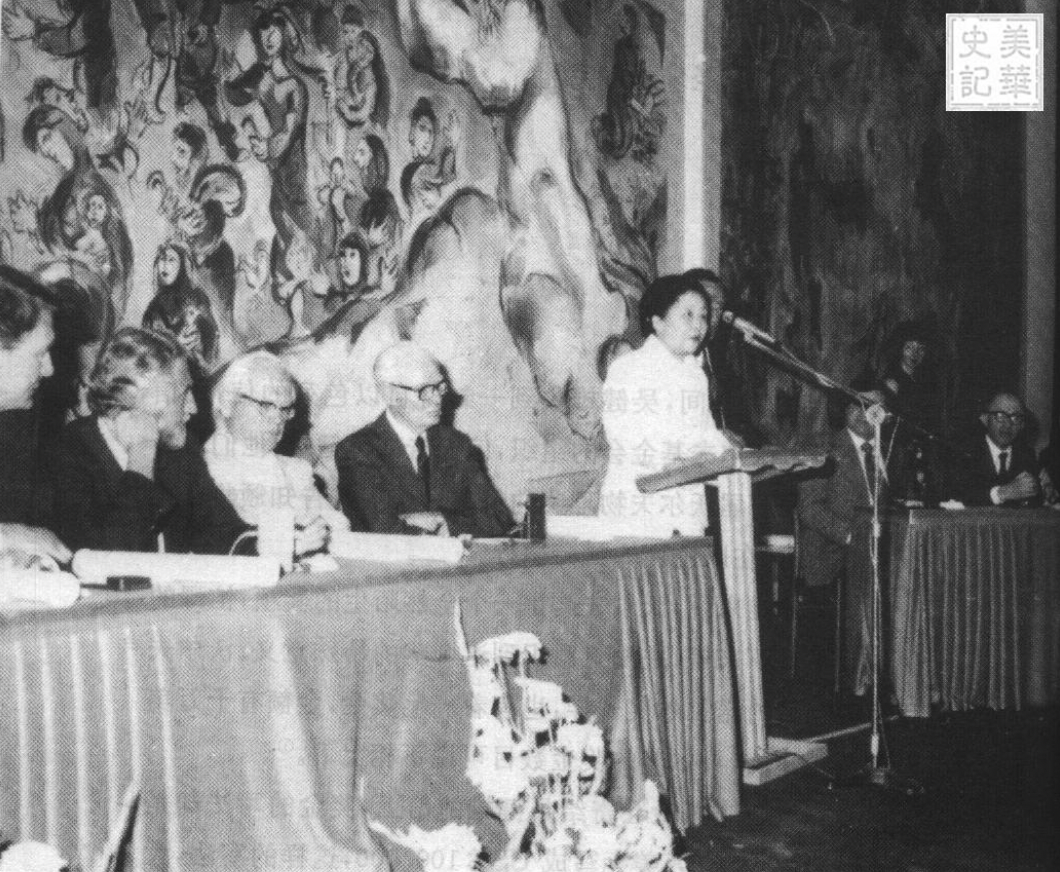
Wu was awarded the Wolf Prize in Physics in 1978 (US Dandelion)
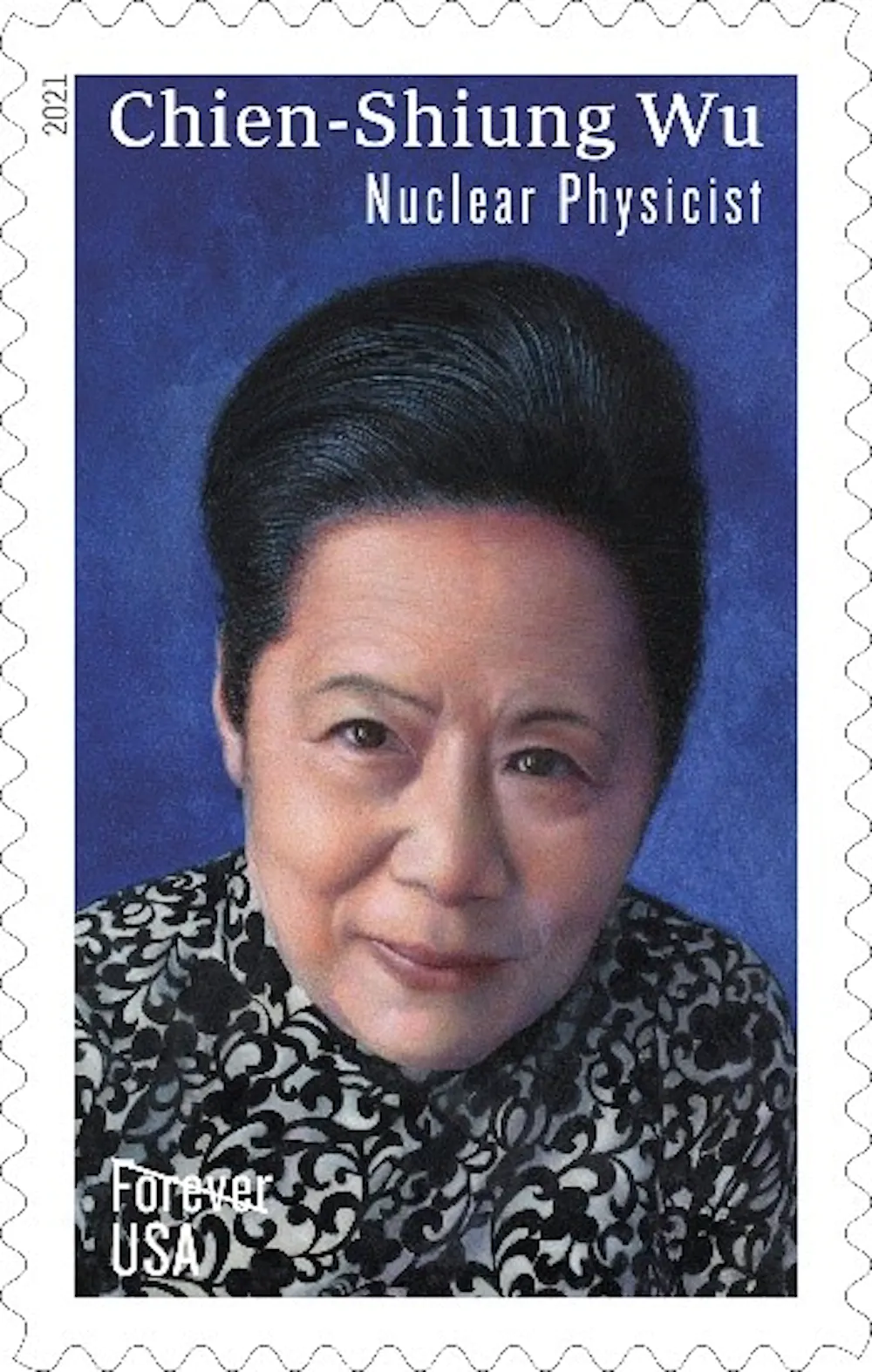
Wu on a U.S. Postal Service Forever Stamp (USPS)
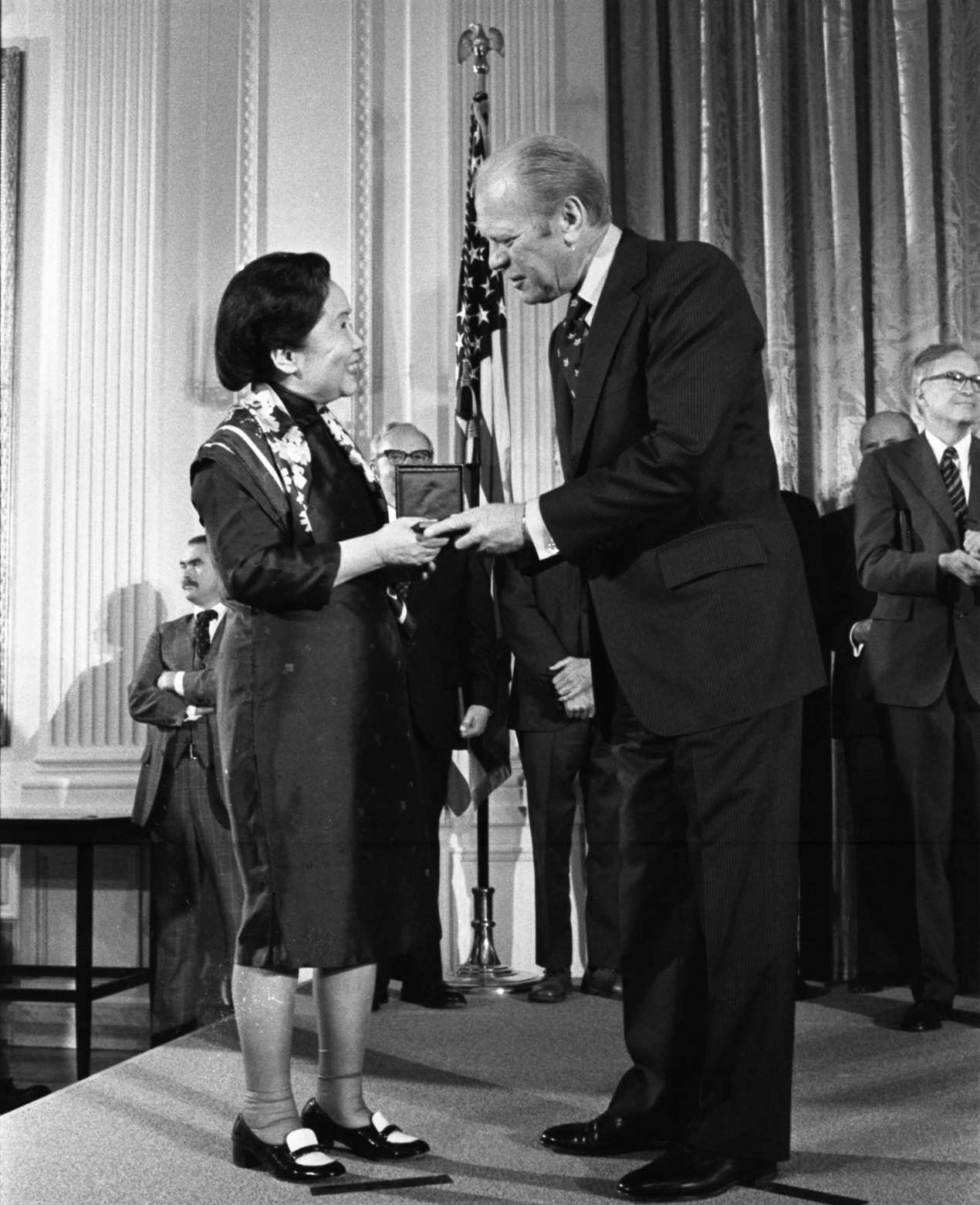
President Ford presenting the National Medal of Science to Dr. Chien-Shiung Wu, 1976 (Ford Library)
In 1978, Wu became the first recipient of the Wolf Prize in Physics, awarded by the State of Israel. The award was often given to scientists overlooked by the Nobel committee in recognition of their great contributions on behalf of humanity.
On February 11, 2021, on the International Day of Women and Girls in Science, the U.S. Postal Service issued a new Forever Stamp in honor of Chien-Shiung Wu. Wu became the first Chinese-American physicist to appear on a stamp, and her legacy will forever continue with this postage stamp.
"Although denied recognition with the Nobel Prize, Dr. Wu received many honors during her career. These include being only the seventh woman elected to the National Academy of Sciences (1958); the Comstock Prize in Physics given by the National Academy of Sciences; the first woman to be president of the American Physical Society (1975); the first person to receive the Wolf Prize in Physics (1978); and the first honorary doctorate awarded by Princeton University to a woman. In 1990, she had an asteroid named after her (2752 Wu Chien-Shiung)." (National Park Service)
Work after Retirement
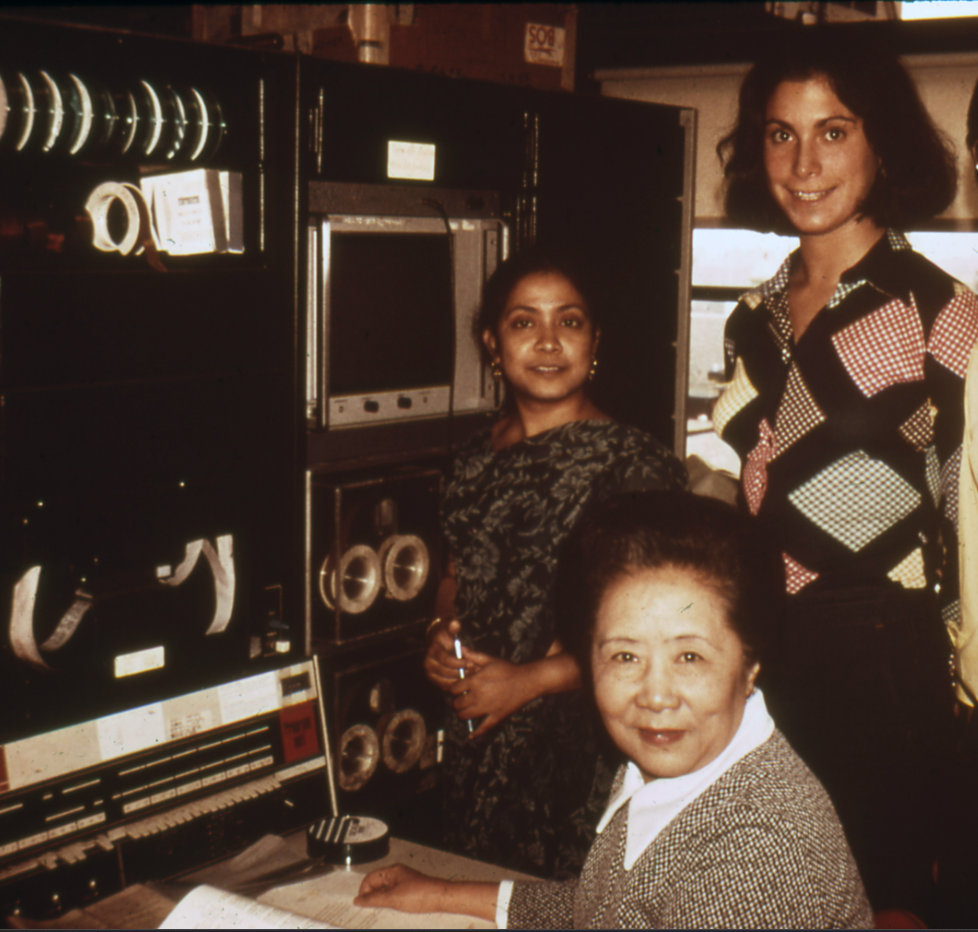
Wu with graduate students at a laboratory (AIP)
After she retired from Columbia in 1981, Wu devoted her time to encouraging young students, especially girls, to pursue their interests in the sciences. She spoke openly about her own struggle to gain recognition for her groundbreaking work through educational programs and by lecturing widely to support this cause. Wu continues to inspire young men and women across the United States, China, and Taiwan.
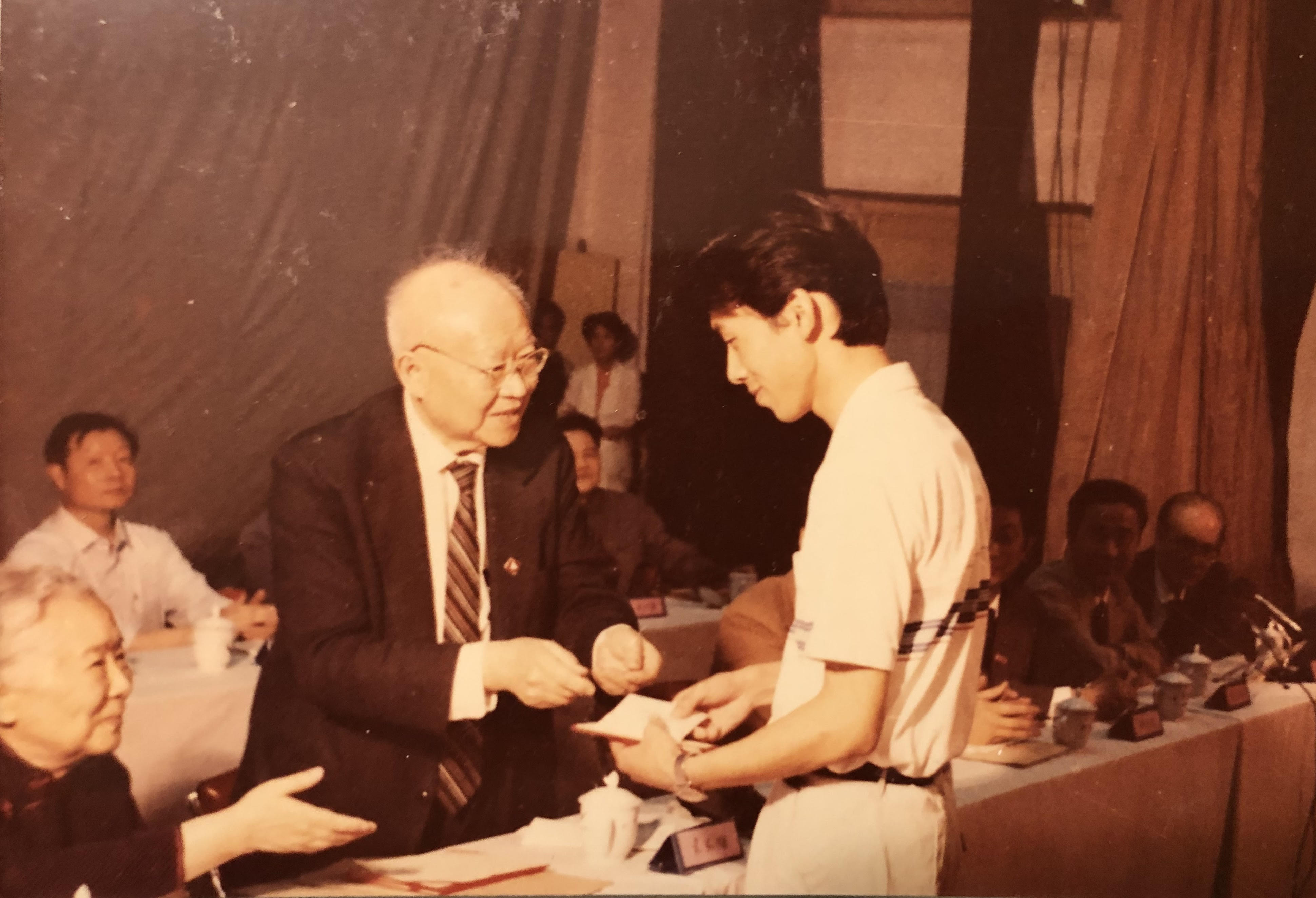
Chien-Shiung Wu & Luke Yuan scholarship for students excelling in physics awarded to my father at Nanjing University, 1990 (Wei Liu)
“When girls are in elementary school they think they can be anyone, they can do anything. All of a sudden they get into high school, and they get into science classes, and besides the fact that they’re doing as well or better than the boys in the class, they’re looking toward their future, and they see posters full of male scientists. They don’t see themselves on the lab bench. They don’t see where their place is,” (Rachel Swaby)
